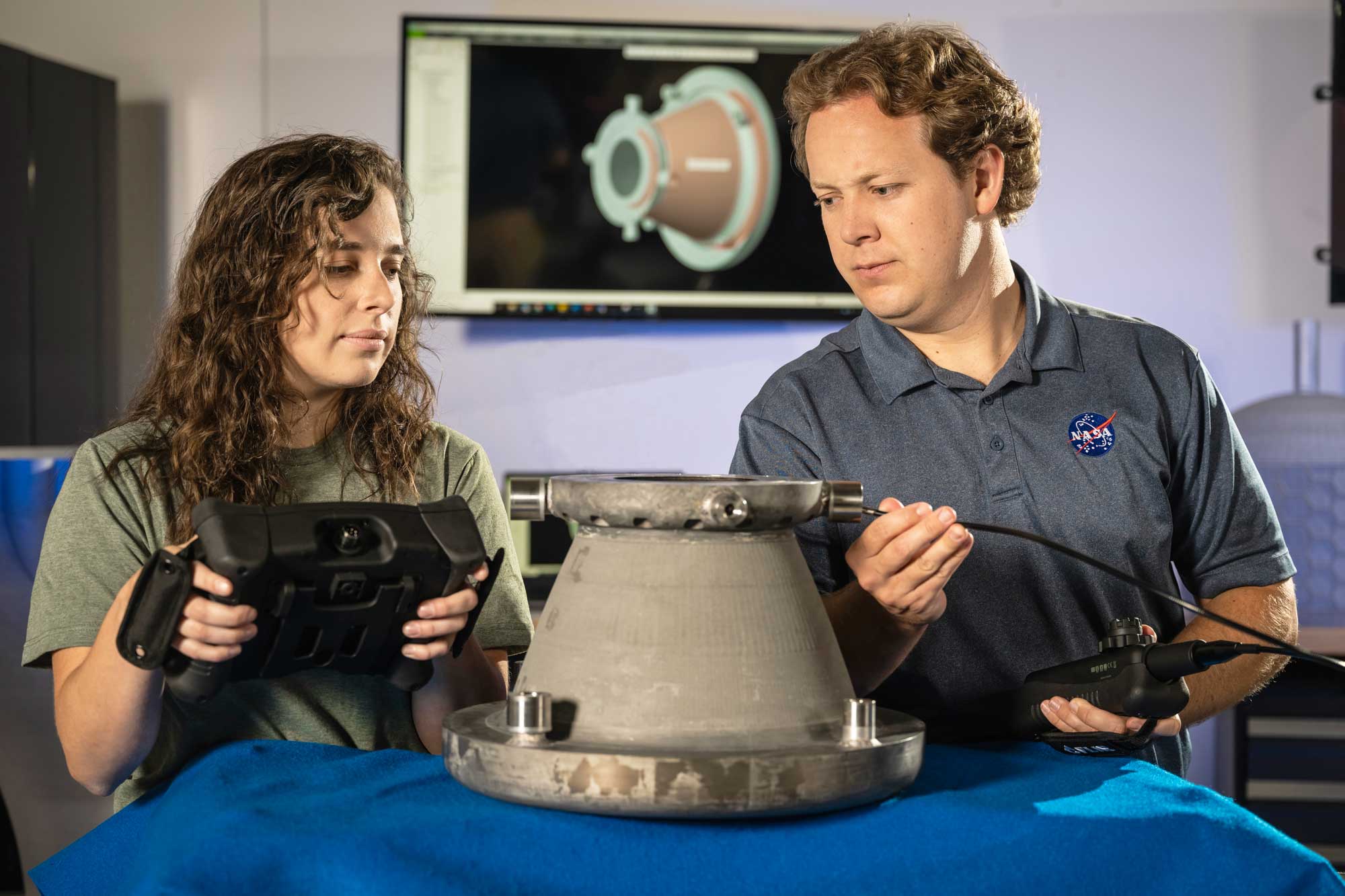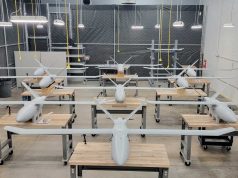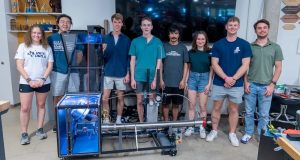NASA recently built and tested an additively manufactured rocket engine nozzle made of aluminum that is lighter than conventional nozzles.
As part of the collaboration, teams from NASA’s Marshall Space Flight Center and Elementum 3D developed a weldable type of aluminum that can withstand the extreme heat of a rocket engine. Aluminum offers the advantage over other metals of lower density, which allows for high-strength, lightweight components. However, aluminum has not been suitable for 3D printing rocket engine parts due to its low heat resistance and tendency to crack during welding.
NASA’s RAMFIRE (Reactive Additive Manufacturing for the Fourth Industrial Revolution) project, funded under the Space Technology Mission Directorate (STMD), addressed this very challenge. The goal was to develop lightweight, 3D-printed aluminum rocket nozzles. These nozzles have small internal channels that cool the nozzle sufficiently to prevent melting.
At the RPMI facility in Rapid City, a nozzle was manufactured using the Laser Powder Directed Energy Deposition (LP-DED) process, which melts and deposits material in layers. Unlike conventional manufacturing methods, where a nozzle can consist of up to a thousand individual parts, the RAMFIRE nozzle is made from a single piece, significantly shortening the manufacturing timeframe.
“Industry partnerships with specialty manufacturing vendors aid in advancing the supply base and help make additive manufacturing more accessible for NASA missions and the broader commercial and aerospace industry,” Paul Gradl, RAMFIRE principal investigator at NASA Marshall, said. “We’ve reduced the steps involved in the manufacturing process, allowing us to make large-scale engine components as a single build in a matter of days.”
The newly developed aluminum, A6061-RAM2, is used for more than just nozzles. The RAMFIRE project has already produced other large components, such as a 36-inch diameter aerospike nozzle, for demonstration purposes.
“Mass is critical for NASA’s future deep space missions,” said John Vickers, principal technologist for STMD advanced manufacturing. “Projects like this mature additive manufacturing along with advanced materials, and will help evolve new propulsion systems, in-space manufacturing, and infrastructure needed for NASA’s ambitious missions to the Moon, Mars, and beyond.”
It remains exciting to see how this innovative technology will be used in future space missions and what other opportunities will be opened up by the use of 3D printing in the space sector.
“This test series marks a significant milestone for the nozzle,” Gradl said. “After putting the nozzle through the paces of a demanding hot-fire test series, we’ve demonstrated the nozzle can survive the thermal, structural, and pressure loads for a lunar lander scale engine.”
Subscribe to our Newsletter
3DPResso is a weekly newsletter that links to the most exciting global stories from the 3D printing and additive manufacturing industry.























